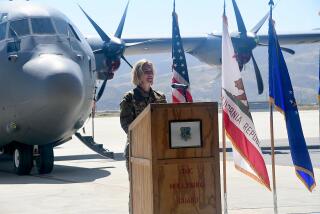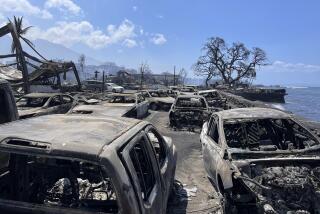Rig’s command structure scrutinized
- Share via
WASHINGTON — A top Coast Guard official told the House Education and Labor Committee on Wednesday that his agency would be investigating the command structure aboard the Deepwater Horizon to see if that played a role in the confusion surrounding the rig’s April 20 explosion in the Gulf of Mexico.
“We do need to clarify who was in charge,” said Rear Adm. Kevin Cook, testifying with a panel of other government agency heads about safety issues facing oil and gas industry workers. An Interior Department official pledged at the hearing that the agency would issue new mandatory safety guidelines for oil rig and cleanup workers, dozens of whom have already reported illnesses.
The Deepwater Horizon was licensed to operate by the Marshall Islands, which authorized a drilling manager to be in charge of the vessel while it was seeking oil at sea.
U.S. law would have placed a specially trained sea captain in command, Cook told the congressional panel, promising to look into the effect of the difference, which was first described in an article published last week by The Times’ Washington bureau.
In an interview after the hearing, Cook said the Coast Guard would investigate the extent to which the bifurcated command of the Deepwater Horizon contributed to confusion on board or to an inappropriate emphasis on production over safety, as some critics have suggested.
“Our goal is to eliminate confusion,” he said, adding that the topic would probably be pursued by a joint Coast Guard-Interior Department commission investigating the accident.
At the hearing, the acting head of offshore regulatory programs at the Interior Department promised that the agency would turn once-voluntary worker safety rules into a mandatory program.
Previously, the voluntary programs used guidelines written by the American Petroleum Institute. The chairman of the House panel, Rep. George Miller (D-Martinez), urged that these proposals be reviewed by independent federal agencies, such as the Occupational Safety and Health Administration, whose chief was also testifying.
OSHA is responsible for workers who are on land or near shore, but its responsibility ends beyond three miles offshore, said David Michaels, the assistant Labor secretary in charge of OSHA.
More to Read
Sign up for Essential California
The most important California stories and recommendations in your inbox every morning.
You may occasionally receive promotional content from the Los Angeles Times.










